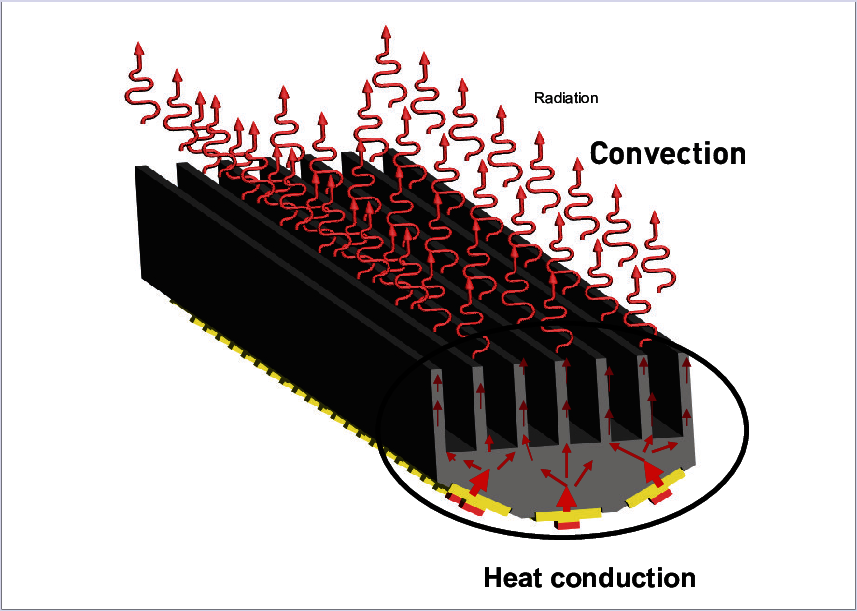
Thermal management

Luminous flux, luminous efficacy and luminous flux degradation of an LED strongly depend on the temperatures on its inside. Luminous flux and luminous efficacy decrease with increasing temperatures. Luminous flux degradation increases, and with it the useful service life of the luminaire in which the LED is operated decreases. For this reason, the heat generated in the LED’s operation must be dissipated. The constructional measures required to achieve this are referred to as the luminaire's thermal management.
Cooling of the luminaire, meaning the release of warmth from the luminaire into its environment is often achieved via a cooling element or via the surface of the luminaire body. Just as important, however, is the transport of heat inside the luminaire. Form, manufacture and material of all components used play a part in this. Only ideal thermal connections along the entire path from the LED to the luminaire surface ensure that the occurrence of trapped heat at the LED is avoided effectively. The surface temperature of the luminaire body, regardless of the luminaire’s inside, will always regulate in practically the same way in the thermal equilibrium (see example "thermal management in a downlight" below).
To rate the effectiveness of a luminaire’s thermal management, extensive measurements on the inside of the luminaire are required to allow conclusions regarding the temperature ti at the pn junction of the LED. LED module manufacturers label their products with a tc/tp point, where the temperature can be measured easily with a sensor. The value measured here allows for direct conclusions regarding the junction temperature and can be used by the luminaire manufacturer to determine luminaire characteristics (see also chapter "Service life of LED luminaires").
In terms of heat release to the environment, the temperature of the surrounding air as well as the opportunity for air circulation (convection) are crucial in the end. Therefore, the installation notes as well as the ambient temperature tq (see chapter "Operating conditions") specified by the manufacturer must be considered.